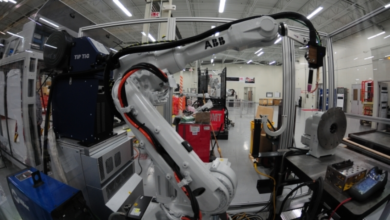Beyond the Buzzwords: Building AI That Gives You a Market Edge

Artificial intelligence (AI) is no longer just a trendy word in today’s fast-paced digital world; it’s a strategic must. Companies in every field are rushing to use AI-based solutions in order to find new ways to save money, make the customer experience better, and get a clear edge over their competitors. Even though a lot of money and enthusiasm are put into AI projects, many of them fail to offer long-term value. To really be successful in AI, you need to do things with purpose, plan, and in line with your main business goals, not just because they’re the latest thing. This is how to use an AI project to get ahead of the competition.
The Problem with Buzzword-Driven AI
Many organizations embark on AI journeys fueled by hype rather than necessity. They invest in AI simply because it’s trendy, often without a clear understanding of how it fits into their business model. As a result, they end up with fragmented, one-off pilots that never scale or drive measurable results. These experiments may look good on a slide deck, but they rarely create the market edge leaders are hoping for.
The first step in moving beyond the buzzwords is recognizing that AI is not a magic bullet. It’s a set of powerful tools and technologies that, when applied strategically, can solve real-world problems and create value. This shift in mindset—from experimentation to execution—is crucial for building meaningful solutions.
Aligning AI Projects with Business Strategy
To create an AI project competitive advantage, alignment with business strategy is non-negotiable. Every AI initiative should begin with a clear business problem or opportunity in mind. Whether it’s reducing churn, optimizing logistics, or enhancing personalization, the use case must be grounded in real business needs.
This requires close collaboration between data scientists, engineers, and business stakeholders. AI teams need context—deep knowledge of the business domain, the pain points, and the desired outcomes. Without this, even the most sophisticated models may fail to deliver impact.
Moreover, success metrics must be clearly defined from the outset. What does success look like? Is it a 10% increase in operational efficiency? A 15% boost in customer retention? Defining these KPIs ensures that AI projects stay focused and measurable.
See also: Empower Your Small Business Through Innovative Tech Choices
Data: The Foundation of Competitive AI
High-quality data is the fuel that powers every AI initiative. Without clean, relevant, and well-structured data, even the best models won’t perform. Businesses aiming for a competitive advantage through AI projects must invest heavily in data infrastructure, governance, and integration.
Data should be accessible, consistent, and compliant with regulatory standards. More importantly, it must be representative of the real-world scenarios the AI model is expected to navigate. Biases, gaps, or outdated information can skew results and erode trust.
Leading organizations treat data as a strategic asset. They establish pipelines that not only collect and store data but also continuously improve it through feedback loops and quality checks. This focus on data maturity is a key differentiator in successful AI deployments.
Scalability and Sustainability Matter
Too many AI projects get stuck in the pilot phase. They show promise in controlled environments but lack the scalability to operate in the wild. To turn a promising prototype into a scalable product, businesses must invest in robust engineering, infrastructure, and operational support.
This includes deploying AI in production environments, integrating it with existing systems, and monitoring performance over time. MLOps (machine learning operations) frameworks are essential to ensure ongoing maintenance, retraining, and governance of models.
Scalability also requires cross-functional buy-in. Business users, IT, legal, and customer service teams all play a role in the sustainable success of AI initiatives.
Final Thoughts
As the AI landscape continues to evolve, the gap between hype and value will only widen. Organizations that want to win in this space must look past the noise and focus on building real, lasting capabilities. AI can indeed offer a powerful market edge—but only if it’s grounded in strategy, powered by data, and executed with precision.
The future belongs to those who understand that AI is not just a technology investment—it’s a business transformation.




